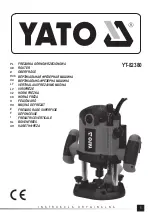
16. Ethernet Ports
ROX™ v2.2 User Guide
153
RuggedBackbone™ RX5000
16. Ethernet Ports
ROX™ Ethernet port control provides the following features:
• Configuring port physical parameters.
• Configuring link alarms/traps for the port.
• Configuring port rate limiting.
• Establishing port mirroring.
• Cable diagnostics.
• Viewing port status.
• Resetting one or more ports.
• Configuring Link-Fault-Indication (LFI).
16.1. Controller Protection Through Link-Fault-Indication
(LFI)
Modern industrial controllers often feature backup Ethernet ports used in the event of a link failure.
When these interfaces are supported by media (such as fiber) that employ separate transmit and receive
paths, the interface can be vulnerable to failures that occur in only one of the two paths.
Figure 16.1, “Controller Protection Through LFI”
. While the link between Switch A
and the Controller functions normally, the Controller holds the backup link down. Switch B learns that
to reach the Controller, it must forward frames towards Switch A.
If the transmission path from the Controller to Switch A fails, Switch A will still generate link signals to
the Controller. The Controller will still detect the link to Switch A and will not fail over to the backup port.
Figure 16.1. Controller Protection Through LFI
To overcome this problem, a way is needed to notify the link partner when receipt of the partner’s link
integrity signal stops. Such a way exists natively in some link media but not in others:
• Auto-Negotiating links (100Base-TX,1000Base-T,1000Base-X) – auto-negotiation is a built-in
feature; the Remote Fault Indication flag is set in the transmitted auto-negotiation signal.
• 100Base-FX links – Far-End-Fault-Indication (FEFI) is a standard feature defined by the IEEE 802.3
standard for this link type. FEFI includes:
















































